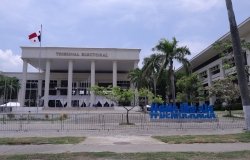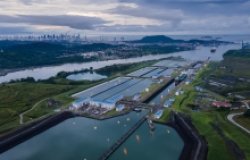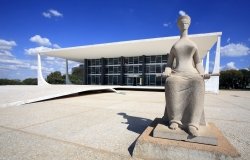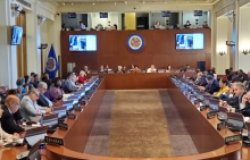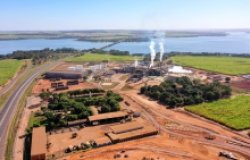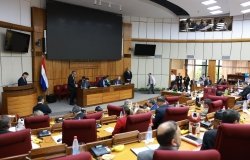
A blog of the Latin America Program
¡Salud!: Drought hangover

Casa Rosada
After two years of drought, 2018 was a breath of fresh air for Argentine wine producers. From 2015 to 2017, Argentine production declined by 19 percent, contributing to “historically low” harvests worldwide. Argentine exports in that period decreased by 17 percent. Weather was not the only headache. A weaker peso drove up production costs for Argentine producers, just as higher prices and an economic slowdown dampened domestic demand.
Though Argentina’s drought continued into 2018, its wine sector experienced a recovery, with production up 23 percent and exports rising by the same percentage. In all, Argentine exports of grape products (including wine and grape juice) were the country’s tenth-largest export category in 2018, with wine sales alone valued at $821 million.
The boom was welcome news in Mendoza – the origin of 67 percent of Argentina’s wine and 85 percent of its wine exports – and in San Juan, the second-largest wine producing province, which bottles 28 percent of Argentine vino. (On April 8, San Juan’s governor, Sergio Uñac, spoke at the Wilson Center and highlighted the industry’s importance.)
Despite last year’s currency crisis, domestic consumption has also picked up.
After years of declines, Argentines increased their wine consumption last year by 3 percent. But the long term trend is negative. Per capita wine consumption in 1970 was 92 liters, compared to only 18 liters last year, as Argentines increasingly choose beer and soft drinks. For that reason, Argentine winemakers are increasingly focused on exports – and increasingly aware of their disadvantages in the U.S. market, the number-one importer of Argentine wine. The 2004 free trade agreement between the United States and Chile allows Chilean wine to enter the U.S. duty-free, whereas Argentine wine faces a tariff of 19.8 cents per liter.
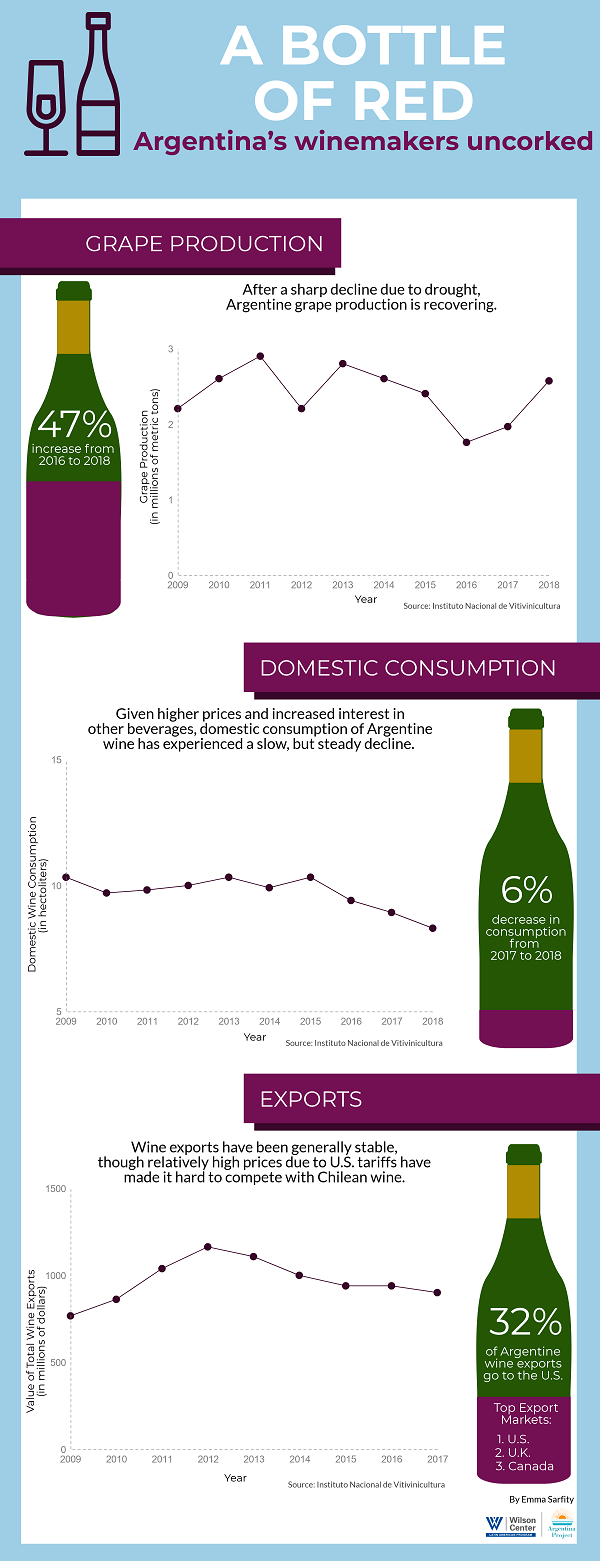
Emma Sarfity
Related Programs

Latin America Program
The Wilson Center’s prestigious Latin America Program provides non-partisan expertise to a broad community of decision makers in the United States and Latin America on critical policy issues facing the Hemisphere. The Program provides insightful and actionable research for policymakers, private sector leaders, journalists, and public intellectuals in the United States and Latin America. To bridge the gap between scholarship and policy action, it fosters new inquiry, sponsors high-level public and private meetings among multiple stakeholders, and explores policy options to improve outcomes for citizens throughout the Americas. Drawing on the Wilson Center’s strength as the nation’s key non-partisan policy forum, the Program serves as a trusted source of analysis and a vital point of contact between the worlds of scholarship and action. Read more

Argentina Project
The Argentina Project is the premier institution for policy-relevant research on politics and economics in Argentina. Read more
